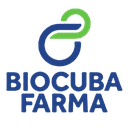Executive Secretary

VIII Simposio Internacional de Química y Ciencias Farmacéuticas
VIII Conferencia "Ciencias Químicas"
Resumen
El desarrollo de nuevos fármacos y agentes terapéuticos es una de las aplicaciones más importantes de la química orgánica sintética. Los conjugados de fármaco-anticuerpo (ADC) y fármaco-péptido (PDC) se encuentran entre las herramientas más poderosas para el desarrollo de terapias oncológicas, ya que muestran una alta selectividad para las células cancerígenas, menor toxicidad que los fármacos citotóxicos originales y una farmacocinética más favorable. Esta clase de agentes anticancerígenos consta de un anticuerpo monoclonal o un péptido orientador unido covalentemente a una molécula anticancerígena muy potente (carga activa), que se libera intracelularmente una vez que el conjugado ingresa a las células cancerígenas. Existen tres aspectos muy importantes en el diseño de ADC y PDC: a) la alta citotoxicidad de la carga activa, b) la presencia de un enlazador escindible que permite la liberación de la carga citotóxica mediada por pH o enzimas, y c) el uso de un anticuerpo o péptido orientador altamente selectivo hacia las células cancerígenas. En esta conferencia describimos nuevas estrategias en fase sólida que permiten un acceso eficiente a compuestos anticancerígenos súper potentes, llamadas tubugis, así como su funcionalización con enlazadores escindibles que permiten tanto la conjugación a la biomolécula orientadora como la liberación del fármaco citotóxico dentro de la célula cancerígena.
Abstract
The development of novel pharmaceuticals and therapeutic agents is one of the most important applications of synthetic organic chemistry. Antibody-drug conjugates (ADCs) and peptide-drug conjugates (PDCs) are among the most powerful tools for the development of oncology therapeutics, as they show high selectivity for cancer cells, lower toxicity than the parent cytotoxic drugs and more favorable pharmacokinetics. This class of anticancer agents consists of a monoclonal antibody or a targeting peptide covalently linked to a highly potent anticancer molecule (payload), which is intracellularly released once the conjugate enters into cancer cells. Three aspects are very important in ADC/PDC design: a) the high cytotoxicity of the payload, b) the presence of a cleavable linker allowing the pH-mediated or enzymatic payload release, and c) the use of an antibody or homing peptide highly selective towards cancer cells. In this lecture, we describe novel all-on-resin strategies permitting efficient access to super potent anticancer compounds, namely tubugis, and as well their functionalization with cleavable linkers to allow both the conjugation to the targeting biomolecule and the traceless release of the cytotoxic drug within the cancer cell.
Sobre el ponente

Daniel García Rivera

Director del Laboratorio de Síntesis Química y Biomolecular, Facultad de Química, Universidad de La Habana
Discussion




